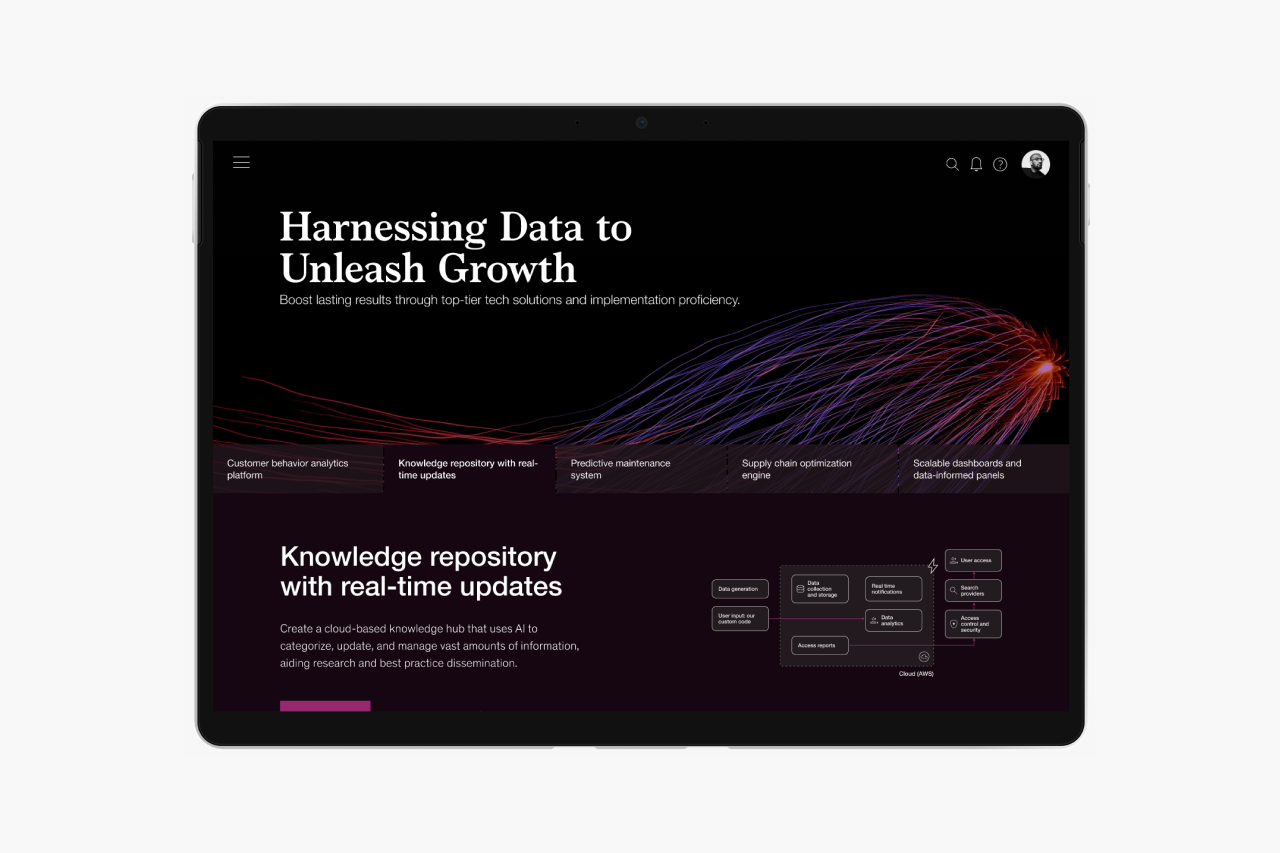DataLabs

Unlocking the potential of data with dynamic, customized solutions
Building a one-stop shop to accelerate consultant’s expertise and expand their network on complex topics
DataLabs operates at the intersection of data science and business intelligence, offering bespoke data solutions tailored to the diverse needs of modern enterprises. This UX case study explores the design and implementation of DataLabs’ innovative platform, which enables users to seamlessly integrate, customize, and utilize a variety of data tools and services. The platform’s core offerings include dashboard creation, real-time knowledge repositories, predictive modeling, and custom data applications, all supported by a robust SaaS infrastructure.
Objective
The primary objective of this project was to design a user-friendly, scalable, and efficient platform that allows business users and data scientists alike to easily access and configure the necessary tools for their data processing and analysis tasks. The challenge lay in creating a system that was both powerful enough for technical users and accessible to those with less specialized knowledge.
Research
User Interviews and Surveys
To understand the needs and pain points of potential users, we conducted interviews and surveys with a mix of data scientists, business analysts, and IT managers. Key insights revealed a demand for:
- A customizable interface with modular features.
- Real-time data processing capabilities.
- Predictive tools that are easy to interpret and integrate into existing workflows.
Competitive Analysis
An examination of existing data solutions platforms showed that while many offered powerful tools, few provided the flexibility and user-centric design that could cater to a broad range of industries and user expertise levels.
Design
User Personas
Based on our research, we developed several user personas, including:
- Emma, a business analyst looking for easy-to-use BI tools.
- Raj, a data scientist in need of advanced predictive modeling capabilities.
- Leo, an IT manager seeking efficient ways to manage data infrastructure.
User Journey Mapping
For each persona, we mapped out user journeys to identify critical touchpoints and potential frustrations within the platform. This helped in designing a more intuitive user flow.
Wireframing and Prototyping
We developed initial wireframes focusing on a modular dashboard that users could customize based on their specific needs. Prototypes were iteratively tested and refined through user feedback sessions, focusing on interface usability and the integration of complex data tools.
Implementation
Modular Design
The platform was built to support a wide range of modules, such as:
- Real-time dashboards
- Predictive modeling tools
- Data integration APIs
- Custom app development environments
SaaS Infrastructure
We implemented a cloud-based SaaS model, which allows for high scalability and easy access to updates and new tools. Users can select, configure, and deploy their chosen solutions through a centralized management console.
Security and Compliance
Given the sensitivity of data handling, ensuring robust security protocols and compliance with global data protection regulations was paramount.
Testing
Usability Testing
Ongoing usability testing was conducted to ensure that both the technical and non-technical users could efficiently navigate and utilize the platform. This included A/B testing of UI elements and feedback loops for continuous improvement.
Performance Testing
To guarantee the reliability and speed of the platform, extensive performance testing was conducted, particularly for real-time data processing features and predictive analytics tools.
Results
Following the launch, DataLabs received overwhelmingly positive feedback from its user base. Key achievements included:
- A 40% increase in user engagement due to the intuitive design.
- Significant reductions in data processing times and increased adoption of predictive tools.
- High customer satisfaction scores, reflecting the platform’s ease of use and versatility.
Conclusion
The UX design process for DataLabs focused on deeply understanding the users’ needs and crafting a solution that was not only functional but also user-centric and scalable. Through rigorous research, thoughtful design, and meticulous implementation, DataLabs has set a new standard in data solutions platforms, providing powerful tools in an accessible and customizable format. This case study not only showcases the potential of tailored data solutions but also highlights the importance of a user-centered approach in the development of complex digital platforms.
